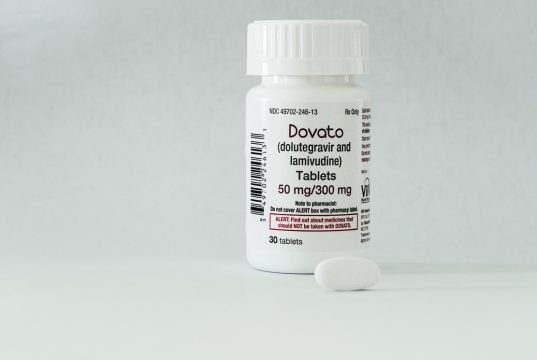Advertisment
EAU 2012 Report – Proactive Discussion about BPH

It is estimated that as many as 24 million European men aged 50 and over experience bothersome urinary symptoms.1,2 Yet, despite experiencing symptoms, men typically wait nearly two years before speaking to their doctor.3
BPH is one of the ten most commonly diagnosed diseases in men over the age of 65. 4
The challenge is that despite some of the troubling symptoms of BPH, men are not seeking medical treatment. These symptoms, which are known as lower urinary tract symptoms (LUTS), include4,5: An urgent and frequent need to urinate, frequently getting up in the night to urinate (nocturia), a feeling of incomplete bladder emptying and a weak urine stream. Men are instead living with these very treatable conditions and experiencing a lower quality of life due to inconvenient and often embarrassing symptoms.
During the EAU, a key discussion was how to proactively engage men in BPH communications with the GP. These discussions were led by two distinguished guest speakers: Professor Mark Emberton, Professor in Interventional Oncology, University College London and Associate Professor, Middlesex University, Londonand Dr Bert-Jan de Boer (pictured), Primary Care Physician (GP), Utrecht, The Netherlands.
The discussions included how to increase the understanding of BPH, the chronic nature of the condition and its impact on the lives of older men, and emphasized how proactive GP-led discussions are important for positive patient outcomes including what role the GP and patient play in initiating the discussion. The benefit of this dialogue can be an earlier diagnosis and better quality of life for the patient.
Prof Mark Emberton stated “We face one key challenge…why do men choose to wait to seek help, especially if it’s available. The answer is that men don’t see their doctor”. Based on a recent survey, he mentioned that about 1/3 of men don’t go to their doctor and about 30% go once a year3.
To help with the communication and understanding of BPH, first there needs to be increased general awareness within the public about BPH, the symptoms and that it is a treatable and manageable condition. Secondly, there is the need for greater communication between healthcare professionals and patients with GPs being ideally suited to be a first-line point of contact for men.
In agreement with this approach is Mr. Syed Jaffery from the Galway Clinic, who says that more than 50% of hospital referrals for BPH could be handled in the primary care setting. GPs do need greater understanding of a BPH diagnosis, however, they are best placed to treat these patients. Primary care teams can treat BPH patients very effectively by putting together a preliminary BPH treatment strategy which would include: taking symptom history; DRE; PSA check and examining flow rates.
GPs can seize the opportunity to help improve the management of this disease.6
The management of LUTS associated with BPH should now focus on risk stratification as a means of identifying men who will benefit most from treatment to reduce the risk of long-term complications. The following are suggestions from Prof Emberton regarding what can be done to help BPH diagnosis and treatment within the GP community7: A diagnostic algorithm, which will include four simple objective tests including a medical history, I-PSS, DRE and PSA. The benefits of these tests are they are easily implemented in any GP office and they allow GPs to accurately diagnose BPH in approximately three-quarters of patients spontaneously reporting LUTS.
In conclusion Prof Emberton stressed that help is available and that men need to know this. Also that BPH is not cancer, so men can do something now to improve their quality of life and that clinicians should be ready for this.
Emberton’s Key Messages:
- BPH can be accurately diagnosed using a set of simple tests that can be easily implemented in the primary care setting.
- Early diagnosis and effective management of BPH has multiple benefits.
- Clinicians need to initiate conversations about bothersome urinary symptoms with men and GPs are well placed to have these conversations.
Dr Bert-Jan de Boer presented a case study entitled “Achieving effective LUTS/BPH management in primary care: What is the GP view? A project from The Netherlands”. The Dutch have developed guidelines which were supported by evidence-based medicine, literature reviews and clinical experience. These guidelines involve treating BPH at a Primary Care level and only refer to the Consultant if the symptoms worsen. This would include a rising I-PSS score, AUR, signs of tumour activity, or if further treatment or surgery is required.
Similar to Ireland, the BPH diagnosis pathway includes the GP taking a full medical history and symptom discussion. Then the I-PSS score is calculated and a physical examination performed, including a DRE (digital rectal exam) with urine and blood tests (Urinalysis and PSA test).8
Within these guidelines, the GPs’ role includes monitoring the patient regularly (three monthly/twice yearly/yearly depending on changes in symptom severity) and using the I-PSS score to see if the symptoms are improving.
Dr Bert-Jan de Boer’s key messages:
- In order to get men talking, GPs need to “just ask” about certain symptoms such as urination trends, overall feelings, common BPH symptoms
- Men will open up if given the right environment and given the opportunity
- GPs can help men to overcome their embarrassment of the topic
Take Home Messages:
- Proactive, GP initiated conversations about bothersome urinary symptoms in older men may result in symptoms and/or suspected cases of BPH being identified and managed at the earliest opportunity
- Early identification and assessment of BPH in older men may lead to timely interventions that reduce the negative impact of symptoms and the potential risk of long-term health complications
- Improving the diagnosis and management of BPH in older men is appropriate and achievable for primary care physicians
- There is a need to raise awareness about BPH, the symptoms and the fact that these are not life threatening and treatable, thus improving their quality of life
- Patient-empowerment via online education is one route for enabling men and their clinicians to have better dialogue about conditions such as BPH. www.yourprostate.eu provides a positive example
References:
1. European Commission eurostat database – January 2011. Available at: http://epp.eurostat.ec.europa.eu/portal/page/portal/population/data/database. Accessed 24 January 2012 at 11:30 GMT.
2. De la Rosette J, Alivizatos G, Madersbacher, S et al. EAU Guidelines on BPH 2009: http://www.uroweb.org/fileadmin/tx_eauguidelines/2004/Full/BPH.pdf. Accessed 24 January 2012 at 16:00 GMT.
3. The BPH survey: a male perspective. Market research undertaken by Kantar Healthcare, an independent market research company that specialises in medical and pharmaceutical studies, on behalf of GlaxoSmithKline (GSK); Summer 2011; 1,161 men over 50 years of age across France, Germany, Italy, Spain and the United Kingdom completed an online survey as part of the National Health and Wellness Survey. Data on file.
4. Banks I, Mayor S, Meryn S. Talking prostates. Journal of Men’s Health. 2010; 7: 221-226.
5. McVary KT. BPH: Epidemiology and comorbidities. American Journal of Managed Care. 2006; 12(5): 122-128.
6. Emberton M, Fitzpatrick JM, Rees J. Risk stratification for benign prostatic hyperplasia (BPH) treatment. British Journal of Urology International. 2011; 107(6):876-80.
7. Carballido J, Fourcade R, Pagliarulo A et al. Can benign prostatic hyperplasia be identified in the primary care setting using only simple tests? Results of the Diagnosis IMprovement in PrimAry Care Trial. The International Journal of Clinical Practice. 2011; online: 1-8.
8. Bemoeilijkte mictie bij oudere mannen M42, November 2004: Voiding problems in elderly men, Guideline of the Dutch Society of General Practitioners (NHG)





